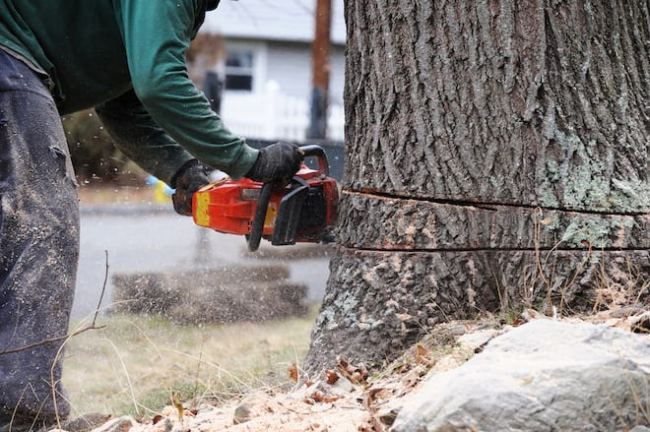Maximizing Value: Cost-Saving Measures for Tree Removal and Replanting on Commercial Properties
Ensuring environmentally responsible Tree stump removal melbourne and replanting on commercial sites necessitates a holistic approach that prioritizes sustainability, conservation, and ecosystem health. Rather than resorting to conventional stump removal methods that may cause ecological harm, adopting eco-friendly practices is key to minimizing environmental impact and promoting long-term landscape resilience.
One environmentally responsible approach to stump removal involves the use of natural decomposition techniques, such as stump grinding or microbial inoculants. Stump grinding utilizes specialized machinery to grind the stump into wood chips, which can then be composted or used as mulch to enrich the soil and support new plant growth. Microbial inoculants, consisting of beneficial fungi and bacteria, accelerate the decomposition process, breaking down the stump into organic matter that nourishes the surrounding soil and promotes nutrient cycling.
Additionally, replanting plays a crucial role in restoring biodiversity and ecosystem function following tree removal. Selecting native tree species that are well-adapted to the local climate and soil conditions enhances habitat value, promotes wildlife diversity, and contributes to overall landscape resilience. Furthermore, incorporating diverse plantings, including shrubs, perennials, and groundcovers, fosters ecological complexity and strengthens ecosystem services such as pollination, soil stabilization, and carbon sequestration.
By embracing environmentally responsible practices for tree stump removal and replanting, commercial property owners can demonstrate their commitment to sustainability, conservation, and stewardship of the natural environment. Through thoughtful planning, implementation, and ongoing management, they can contribute to the creation of vibrant, resilient landscapes that benefit both people and the planet.

Achieving cost savings in tree removal and replanting endeavors on commercial properties requires strategic planning, efficient resource utilization, and innovative solutions that balance economic considerations with environmental stewardship. While upfront costs associated with tree removal and replanting activities may seem daunting, implementing cost-saving measures can yield long-term financial benefits and enhance the overall value of the landscape.
One cost-saving strategy involves bundling tree removal and replanting services to leverage economies of scale and reduce overall project costs. By coordinating these activities concurrently, property owners can streamline logistics, minimize downtime, and optimize resource allocation, thereby maximizing efficiency and cost-effectiveness.
Furthermore, exploring alternative tree removal methods, such as selective pruning or coppicing, can offer cost savings compared to traditional stump removal techniques. Selective pruning involves strategically removing branches or sections of the tree to address specific issues, such as disease or structural instability, while preserving the remaining canopy. Coppicing, a traditional forestry practice, involves cutting the tree back to ground level to promote vigorous regrowth from the stump, reducing the need for complete tree removal and replanting.
Moreover, sourcing trees from local nurseries or propagating native species from seeds or cuttings can lower procurement costs and ensure the suitability of plantings for the local environment. Native species are often better adapted to local climate conditions, require less maintenance, and are more resilient to pests and diseases, reducing long-term management costs and enhancing landscape sustainability.